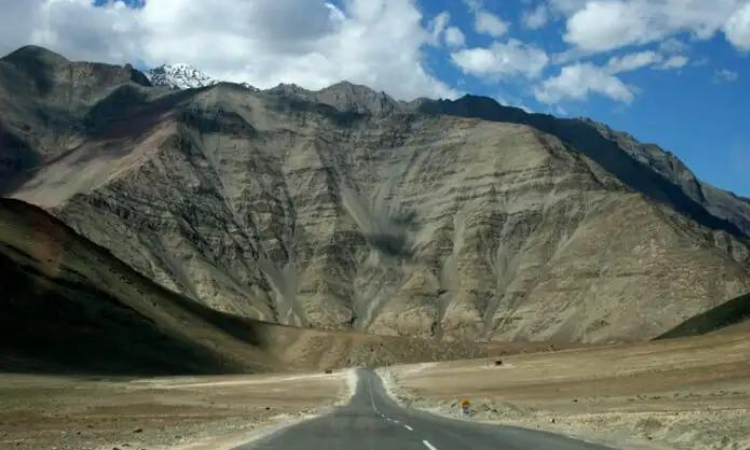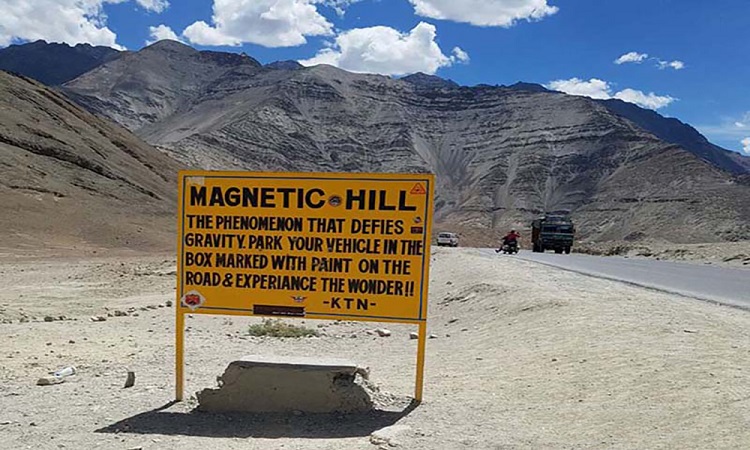
The "Magnetic Hill" phenomenon in India refers to a mysterious and optical illusion-like occurrence that can be experienced in certain locations, notably in Ladakh, a region in northern India. While it may seem like a magnetic force is pulling vehicles uphill, the explanation behind this phenomenon is not related to magnetism at all. Instead, it's a result of cleverly crafted topography.
Despite the name, the phenomenon has nothing to do with actual magnetism or magnetic forces. Instead, the name is based on a misinterpretation of the natural occurrences that take place at these sites. The optical illusion at Magnetic Hills makes it seem as though vehicles parked in neutral gear are moving uphill on their own, apparently defying gravity. This illusion occurs because of the layout of the surrounding landscape, the hills, and the road's topography. In reality, the road is sloped in a way that makes it look like vehicles are moving uphill, when they are actually moving downhill.

Photo credit: traveltriangle.com
The term "Magnetic Hills" likely originated because people believed there was some mysterious magnetic force at work that caused this unusual phenomenon. It's important to note that there is no magnetism involved in these occurrences; it's purely an optical illusion created by the geography of the area.
Here's what happens at these Magnetic Hill locations:

Photo credit: vargiskhan.com
One of the most well-known Magnetic Hills in India is located on the Leh-Kargil-Baltic highway in Ladakh. Tourists often stop here to witness the apparent magnetic pull. However, this effect is not unique to India; similar optical illusions are found in various places around the world.
In essence, the Magnetic Hills of India are not truly magnetic but are a result of natural topography and optical illusions. While they might not involve actual magnetic forces, they remain intriguing and entertaining destinations for travelers seeking unusual experiences.